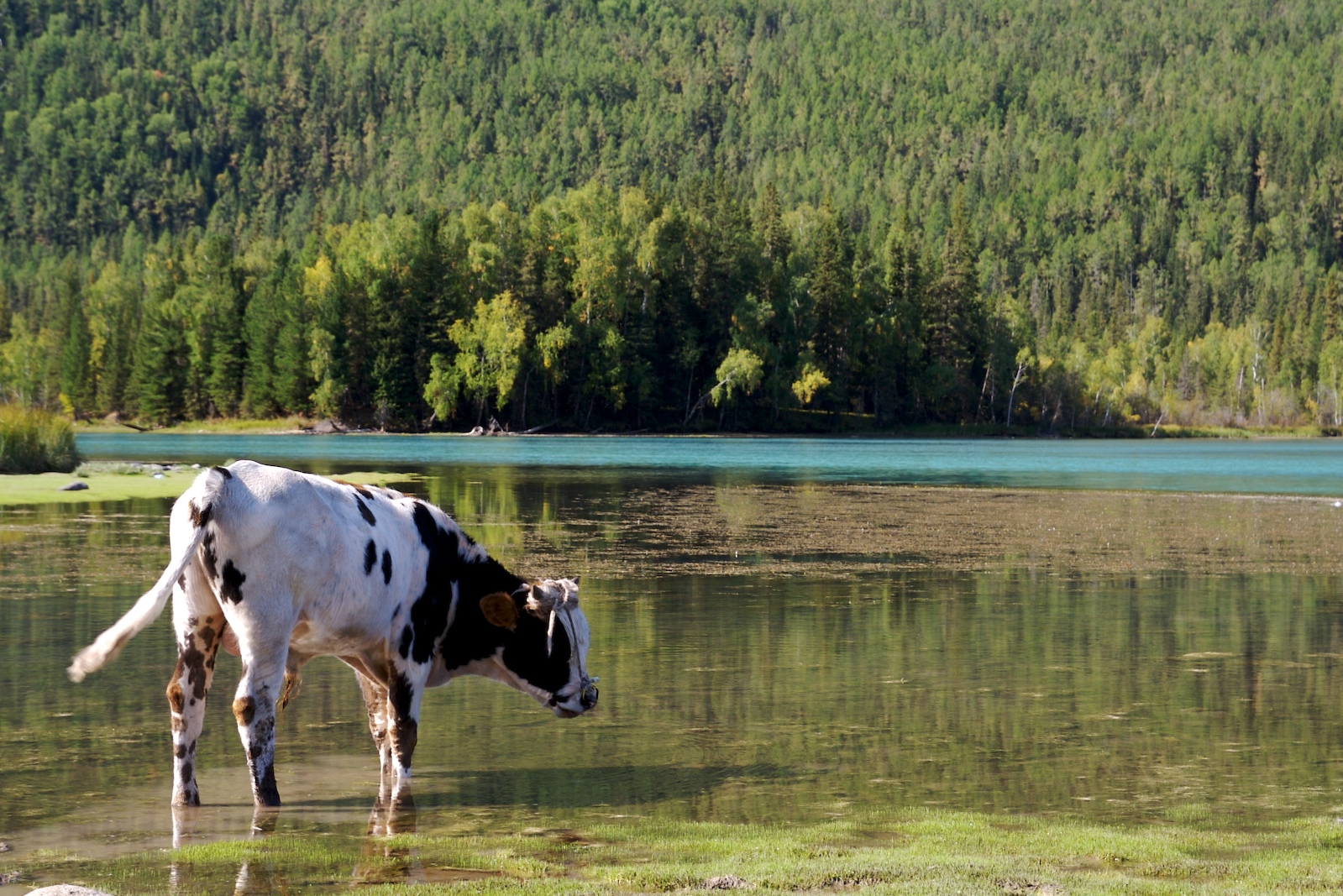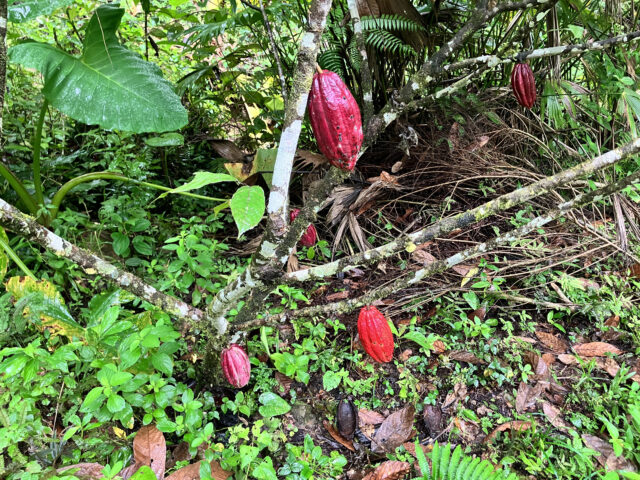
This article originally appeared on the Wilson Center’s New Security Beat and is available here.
When Kevin Chen began his agricultural research 20 years ago, most dairy farms in China were small and family-owned. People of his generation did not grow up with milk deliveries or ice cream. Today, however, these farms have been replaced by massive agri-businesses raising tens of thousands of dairy cows, and dairy is a regular part of many people’s diets in China, thanks to rising incomes and years of governmental promotion of cheese, yogurt, and milk.
Dairy consumption in China has risen 15-fold over the past five decades, making it the leading source of greenhouse gas emissions in the agricultural sector. In 2021, methane emitted by Chinese dairy cows was three times that of New Zealand, a top dairy-producing country. Kevin Chen now heads the East and Central Asia office of the International Food and Policy Research Institute (IFPRI), where he is leading projects to lower the greenhouse gas “hoofprint” of the dairy sector.
Reducing GHG emissions in dairy – A missed opportunity
To reach its ambitious decarbonization and pollution control targets, the Chinese leadership has long prioritized GHG mitigation in the energy sector, with much less emphasis on agricultural emissions. While dairy is not yet prioritized as a climate action target, policies to encourage biogas facilities at farms to treat and prevent manure waste from leaking into waterways are helping to mitigate methane emissions. Moreover, the agricultural science community in China has recognized the need to reduce the methane output of dairy farms and promote innovations in biotechnology and manure management.
Reducing GHG emissions in the dairy sector could contribute to China’s 2060 carbon neutrality goal and the pledge to curb methane emissions made at the COP27 climate summit in 2022. China needs to develop tailored climate policies that incentivize more scientific research and investments to decarbonize dairy farms, and the agricultural sector more broadly, while also ensuring food security and employment.
The China Environment Forum sat down with Kevin Chen to talk about his long-term work of promoting science-based policy development in sustainable dairy, especially his recent Mitigate+ China project supported by the Consortium of International Agricultural Research Centers (CGIAR).
China Environment Form (CEF): In China, agriculture receives less policy attention than other economic sectors in reducing GHG emissions despite its significant input. Why is that?
Kevin Chen (KC): Agriculture accounts for only five percent of the total GHG emissions in China, which makes it a less attractive candidate for emission reduction policies than high-carbon sectors like energy and industry. But if we look at the whole food system, from agriculture and food processing to transportation, processing, and waste disposal, GHG emissions from agriculture are closer to 8 to 10 percent of China’s total. Moreover, some agricultural climate actions do more than simply reduce emissions – they also can sequester carbon. Forests, grasslands, and croplands all contribute to carbon sequestration. Carbon sinks from the agricultural sector could play a critical role in helping China meet its 2060 carbon neutrality goal.
CEF: CGIR centers, including IFPRI, launched the Mitigate+ project to investigate GHG emissions in China’s dairy sector. Why did you pick the dairy to start your climate and food work?
KC: First, Mitigate+ builds on a successful dairy sector research project by the Chinese Academy of Agricultural Sciences (CAAS) and CGIAR Research Program on Climate Change, Agriculture, and Food Security. We also picked dairy since the intensity of GHG emissions per dairy cow is big, roughly equal to those of two beef cattle or 16 pigs! Moreover, as China’s dairy farms become more industrialized, there is greater potential for us to create and implement effective policy interventions.
CEF: Could you tell us a bit more about the Mitigate+ project’s impact?
KC: Mitigate+ is still in its first year, so no big results yet. Our goal is to help China develop a low-carbon dairy strategy and action plan. We are investigating how to improve data collection on methane emissions from China’s dairy sector and identify policies and practices to lower these emissions. I am particularly excited about a living lab, a demonstration project, where we are exploring how to incentivize changes in farming practices to reduce emissions and scale them up. We will then be taking this research from farms to policy forums. Through future policy briefs and dialogues we hope our work can guide policy in a more scientific and data-based direction.
CEF: What are some preliminary policy recommendations from Mitigate+ project?
KC: As milk security is a critical issue in China, we encourage policymakers to pay special attention to low-carbon technologies that can also improve milk production. We also underscore the significance of small- and medium-sized dairy farms, as there are many opportunities for them to improve productivity. Another focus is technology innovations in animal feed, which have great impacts on reducing cow belching and flatulence, the two biggest sources of methane emissions from dairy farms. We also work with researchers from Zhejiang University, Beijing University, and China Agricultural University to create more participatory approaches to involve the private sector and research communities in curbing methane emissions in the dairy sector.
CEF: What co-benefits do you expect to see from China’s policy and investment in decarbonizing the dairy sector?
KC: Climate policies must also benefit farmer livelihoods. So, policies need to encourage dairy farmers to adopt practices, such as improvements to feed that reduce greenhouse gas emissions and increase production and profits. To date, I don’t believe dairy farms have enough financial incentives yet. Such an effort requires coordination from the policy and financial spheres to create markets that incentivize climate action in agriculture. Green finance to give loans to help farmers will be key. But we still need to understand what interest rates and loan periods should be.
CEF: Do you think there are good opportunities for China and the U.S. to cooperate on agriculture and climate issues in the near future?
KC: I hope so. The United States is the largest supplier of agricultural products and China is the largest importer. They are also the two largest GHG emitters in the world. Now, the Xi Administration’s major commitments to the dual carbon targets and environmental protection open a door for China to take climate action in the agriculture sphere. I hope China can learn from the United States, as it is ahead of the game in piloting new financing and policies for climate mitigation in agriculture.
Photo credit: randomix / CC BY-NC-ND 2.0.



